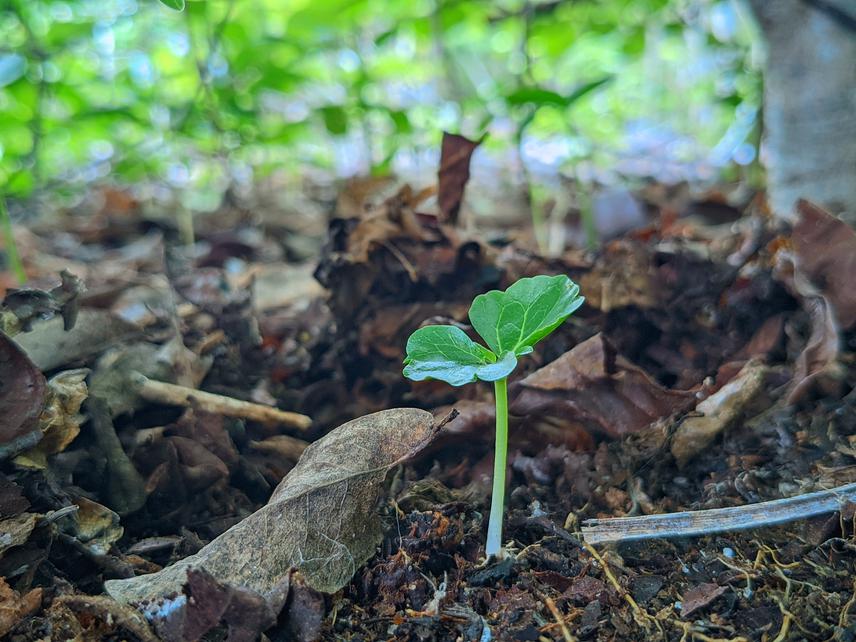Rickarlos Bezandry
Baracoffea, made up of 9 endemic species, are coffee species found exclusively in the forests typical of Madagascar's western region. Having carried out doctoral work with the University of Mahajanga on 03 of the 09 Baracoffea species (Coffea ambongensis, Coffea bissetiae and Coffea boinensis) found near the town of Mahajanga in the Boeny-Madagascar region, we have demonstrated that these three species are of significant interest in understanding the adaptation of coffee trees to semi-arid tropical climates.

Seedling of Coffea ambongensis in its natural habitat in Antsanitia. © Rickarlos Bezandry/University of Mahajanga.
These three species have morphological, phenological and physiological characteristics atypical of coffee plants, enabling them to adapt to the semi-arid environments of western Madagascar. However, they are now endangered in their natural habitats, due to human activities. In addition, species of the Baracoffea group are probably the most misunderstood within the Coffea genus and are completely absent from any form of ex- or in-situ collection in Madagascar or worldwide.
The objectives are:
(1) to characterize their growth strategy and phenology in relation to their natural environment,
(2) to study their germination
(3) to set up an ex-situ collection within the educational botanical garden of the University of Mahajanga. This ex-situ collection will be a learning tool for the accessible to research within the university and with other interested partners/institutions.
Header: Fruits of Coffea bissetiae. © Rickarlos Bezandry/University of Mahajanga.